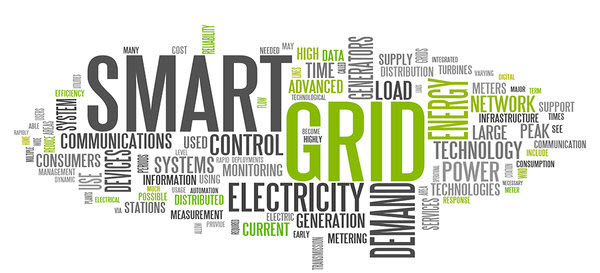
Image rights Siemens EnergyIP Mosaic®
I was looking at the changes made by Siemens on their meter data management software on their recent relaunched EnergyIP Mosaic®; their next generation of the leading EnergyIP® Meter Data Management.
“Siemens is taking its market-leading meter data management software to the next level, supporting customers to get ready for future changes to the energy system,” said Sabine Erlinghagen, CEO of Digital Grid at Siemens Smart Infrastructure.
Siemens has taken a design thinking and co-creation approach to understanding customer needs. Siemens worked extensively with multiple customers globally to understand their exact needs when it comes to meter data management.
The relaunched MDM software focused on enhancing user-centricity
EnergyIP Mosaic® has not only changed its look and feel but opened up new efficient ways of performing tasks, providing better situational awareness for customers. The solution has focused explicitly on workflow improvements, giving the new software a more efficient, intuitive, insightful, adaptable and ready to use sense and feel.
With the new relaunched software, users can see everything clearly on one screen through EnergyIP Mosaic’s new, modern interface that can swiftly bring together all the information you need on one screen.
This update differs significantly from the past EnergyIP Mosaic® offers a new, modern interface that swiftly brings together all the information on one screen, whereas in the past, there were requirements to open multiple tabs in the UI. Data, correlations, root causes, and other advanced functionalities are intuitive and easily understandable with interactive visualizations and shortcuts.
“EnergyIP Mosaic® lets you find what you need and understand what you see.”

Image rights Siemens EnergyIP Mosaic®
This next-generation solution offers far greater efficiency and flexibility to busy users. The modern interface is easy to learn and use, improving customer experience. Management can quickly review dashboards and data on the go using a tablet to help in any facilitation or deliver a quicker answer for actions and insights.
New capabilities of EnergyIP® MDM
A significantly increased focus on Event Data and Action Management (EDAM)
Do you want to save time by detecting anomalies automatically?
There is so much your data is telling you: the health of your hardware, safety issues, revenue loss, meter installation issues and operational issues. EDAM automatically analyses AMI data, events and interval read with multiple detection rules created by you for your business needs.
Achieving greater Business Monitoring
Do you know what is going on with your operations on a daily basis?
Remove the “black box” and increase the transparency of AMI data to make quick, confident decisions. Users can drill down to investigate data collection and quality issues, see trends and spot geographical clusters of potential service issues points. The users can quickly gain situational awareness and better visibility into data quality issues for effective resolution.
KPI’s significantly improve through this increased transparency. For instance, now it provides KPI potential for what percentage of service points have complete data from a business perspective, improving the data quality. Also built-in is the ability for KPI’s to be constructed for different ratepayer groups, customer classes, AMI systems etc.
The new software gives easier viewing, more informed data to make quicker, confident decisions from data collection and exception management to billing and data exporting, as well as monitoring of usage anomalies; you will have insight into the data and be equipped to act. The real value of providing actionable interactive dashboards for both ongoing and exception resolution handling has become a critical feature.
The availability of Software-as-a-Service is part of this relaunch
Are your critical IT personnel overloaded with maintaining an ever-changing IT landscape? The new EnergyIP Mosaic® offers three different EnergyIP Deployment Models.
So what are the different benefits and trade-offs?
The most traditional MDM model is EnergyIP MDM On-Premise. This MDM model offers the utilities a license model. As the customer, they are responsible for purchasing the licenses, storing the data and additional costs that will occur regarding maintenance updates and/or software upgrades. It is highly customizable and configurable but has its limits and cost considerations to evaluate, depending on the future business plans and the available capital.
The second option is the Hosted one; this is growing in its popularity with the increasing need for data to be stored in the Cloud. Hosted offers the customization and configuration of on-premise, but customers save space and reduce IT costs by storing data in the Cloud. Therefore, the data is NOT stored in a data centre at a customer’s physical location. It is stored in a private cloud environment that only the customer has access to.
The third option is Software-as-a-Service (SaaS) and is rapidly becoming the future for software and is now available for EnergyIP® MDM SaaS globally. EnergyIP MDM SaaS was launched in early 2021 in the United States. SaaS offers unique benefits because it is a subscription model, and data is stored on a secure but public hosted site. EnergyIP MDM SaaS uses AWS, Amazon Web Services. SaaS is lower cost and has a faster implementation time.
SaaS has all the great benefits of EnergyIP MDM.
Having available all the functionalities, SaaS provides the real option of reducing your risks, cost and complexity in a preconfigured service with Cloud-based security and regular upgrades to allow the MDM provider to focus on their core business and have a very limited IT infrastructure investment and workload pressures. This option is an all-in-one subscription. Implementation can be rapid, possibly within three months, depending on the connectivity and the existing designed communications network and its integration into any more comprehensive technology solutions planned or in use and dependencies on its interoperability and cybersecurity assessments.
Intelligence and building sustainable action capabilities
As Sabine Erlinghagen, CEO of Digital Grid at Siemens Smart Infrastructure, states: “We need intelligence – be it automation or artificial intelligence – to provide improved guidance to grid operators. Digitalization is the key enabler to make grids flexible enough to handle the rising complexity caused by an ever-increasing infeed of renewable energy and a growing share of EVs on the road while remaining resilient.
To master the new complexity, we have to turn data into knowledge and knowledge into sustainable action. With our digital technologies, we want to help utilities safeguard and even accelerate the energy transition.
We need to find better ways to use the already collected data for new purposes. For example, in the past, smart meter data was used for billing purposes only. But data collected by smart meters is extremely valuable for other processes as well.”
EnergyIP can be central to current or future add-on applications.
EnergyIP will be ready to support what customers change or try to accomplish in the future (e.g. changing rates, changing AMI infrastructure, new data privacy and cyber security regulations, exchanging IT landscape, new value add use cases.
EnergyIP Portfolio leads the market in MDM and related applications
Discover the full potential of your data beyond meter-to-cash with add on applications such as Analytics Foundation, Revenue Protection, Integration Adaptors, Low Voltage Outage Management, Advanced Device Management, Energy Engage, Prepay and Front End Processor.
Siemens sums up the result of this relaunch.
“We worked extensively with our User Advisory Board, the largest global user community dedicated exclusively to MDM, to understand their exact operational needs. EnergyIP Mosaic® has not only changed its look and feel but opened up new efficient ways of performing tasks, providing better situational awareness for customers. We’ve improved task efficiency by up to 85%, and situational assessment time has been reduced by 60%. By focusing on workflow improvements, the new software is more efficient, intuitive, insightful, and adaptable,” states Ming Ho, Senior Director of User Experience and Strategic Innovations.
Find out more on the relaunched EnergyIP Mosaic®, the next generation of the leading EnergyIP® Meter Data Management.

Image rights Siemens EnergyIP Mosaic®
So to unlock the full value of your smart metering investment, take a visit and learn more about EnergyIP®’s Metering Solutions on the Siemens site here, where you’ll find all the latest EnergyIP Metering materials, including brochures and datasheets as well as customer support information.
Siemens EnergyIP Mosaic® “lets you find what you need and understand what you see”




 Something that will take thirty to forty years to turn from being ambitious and full of intent into realization is hard to relate too. Hydrogen is one of those promised solutions that can potentially allow us to achieve our “net-zero” carbon ambitions that have been “set in stone” (The Paris Agreement) dealing with greenhouse-gas-emissions mitigation, signed in 2016 that we need to achieve by 2050.
Something that will take thirty to forty years to turn from being ambitious and full of intent into realization is hard to relate too. Hydrogen is one of those promised solutions that can potentially allow us to achieve our “net-zero” carbon ambitions that have been “set in stone” (The Paris Agreement) dealing with greenhouse-gas-emissions mitigation, signed in 2016 that we need to achieve by 2050.
 The Smart Grid is evolving and will be essential in the next decade to bring the kind of transformation our existing energy grids require. Infrastructures to be fit for purpose must be fully integrated and smart to manage the increasing complexity and needs of electricity in the 21st century.
The Smart Grid is evolving and will be essential in the next decade to bring the kind of transformation our existing energy grids require. Infrastructures to be fit for purpose must be fully integrated and smart to manage the increasing complexity and needs of electricity in the 21st century.